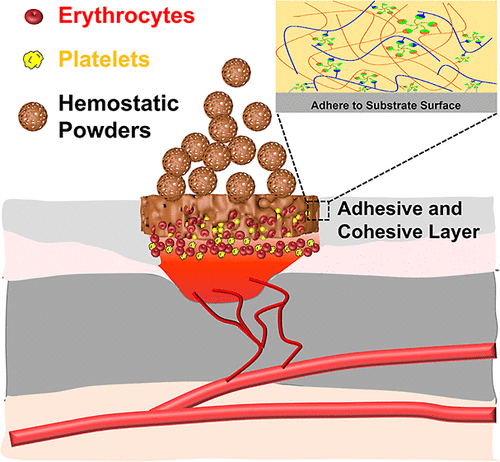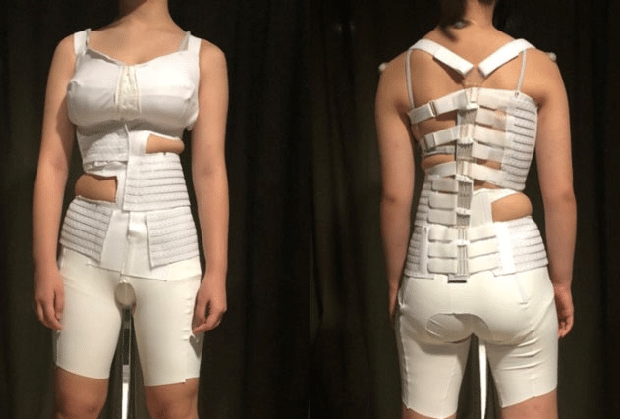Publications
Filter
Year
Optimization of amino acid-based poly(ester urea urethane) nanoparticles for the systemic delivery of gambogic acid for treating triple negative breast cancer
The study investigates the structure–property relationship by fine-tuning the structure of AA-PEUU, including the amino acid type, hydrocarbons, the ratio of functional building blocks, and PEGylation, to identify the nanoparticle candidate with optimized delivery performances. Read more

Posture correction girdle with intelligent padding system to dynamically adjust the pressure distribution and correct the scoliotic spine
This study presents a pneumatic padding system for adolescent idiopathic scoliosis. It allows dynamic pressure adjustments, evidenced by wear trials that show improved posture correction and reduced curvature. This innovative system offers a promising alternative to traditional braces, enhancing patient support. Read more

Inclusive Design for Older Adult With Degenerative Scoliosis: The Integration of Monitoring Sensors and Functional Garment
This study delves into crafting a scientific framework for smart monitoring garments tailored for Adult Degenerative Scoliosis (ADS). By blending qualitative and quantitative research, it explores integrating smart sensors with garments, aiming to enable spine rebalancing through advanced self-correction techniques. Read more

Multifunctional and tunable coacervate powders to enable rapid hemostasis and promote the infected Wound Healing
This study develops a hemostatic powder from tricomponent GTP coacervates consisting of gelatin, tannic acid (TA), and poly(vinyl alcohol) (PVA). Read more

Immediate Effects of Posture Correction Girdle on Adolescents with Early Scoliosis.
This study explores a posture correction girdle for adolescents with early scoliosis, using radiographic imaging and 3D body scanning. Findings reveal positive effects, including reduced spinal curves and improved postural balance, suggesting alternative treatment options beyond observation. Read more

A zwitterionic silver nanoparticle-incorporating injectable hydrogel with a durable and efficient antibacterial effect for accelerated wound healing
Antibacterial wound dressing is essential for inflammation control and accelerated wound healing. This study investigates polyzwitterion-functionalized silver nanoparticles (AgNPs) with enhanced antibacterial performance in an injectable wound dressing hydrogel. Read more

Preliminary wear trial of anisotropic textile brace designed for adolescent idiopathic scoliosis
This study introduces a semi-rigid brace for adolescent scoliosis patients, achieving effective spinal correction with enhanced comfort. Preliminary wear trials indicate its performance matches original designs, while offering superior user experience. Read more

Design and fabrication of anisotropic textile brace for exerting corrective forces on spinal curvature
This study focuses on the fabrication of an anisotropic textile brace that exerts corrective forces based on the three-point pressure system to treat scoliosis, which is a medical condition that involves deformity of the spine. Read more

Highly Transparent, Mechanical, and Self-Adhesive Zwitterionic Conductive Hydrogels with Polyurethane as Cross-Linker for Wireless Strain Sensors
Zwitterionic hydrogels excel in flexibility, strength, and sensory sensitivity for wearable sensors. Their superior adhesion supports applications in robotics and prosthetics, providing reliable real-time mechanotransduction detection without additional adhesives. Read more

Here goes your text ... Select any part of your text to access the formatting toolbar.
Here goes your text ... Select any part of your text to access the formatting toolbar.
Here goes your text ... Select any part of your text to access the formatting toolbar.
Here goes your text ... Select any part of your text to access the formatting toolbar.
